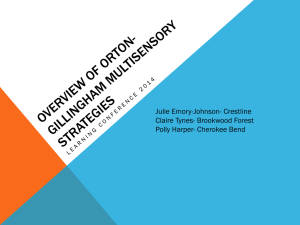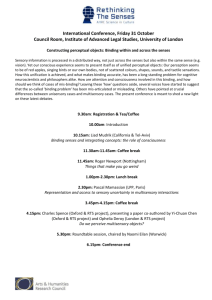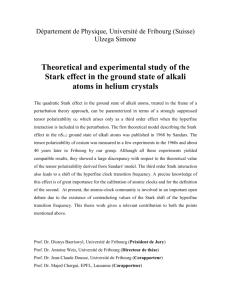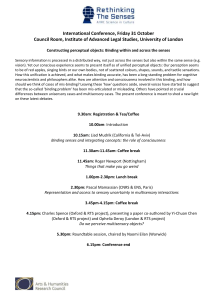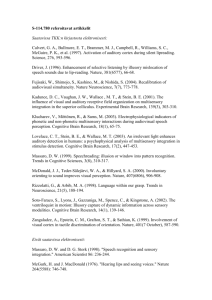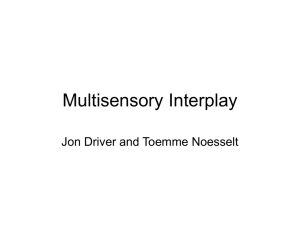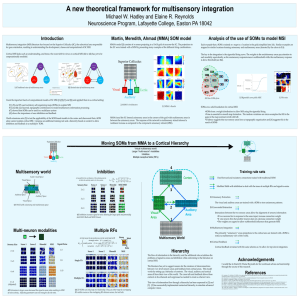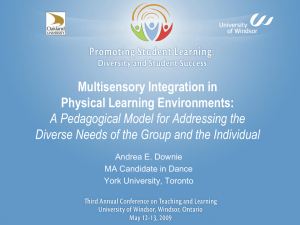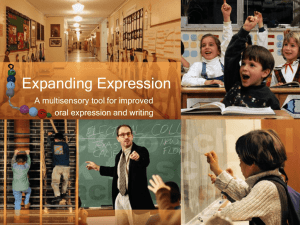Afin d'interagir avec le monde multimodal qui nous entoure, nous
advertisement
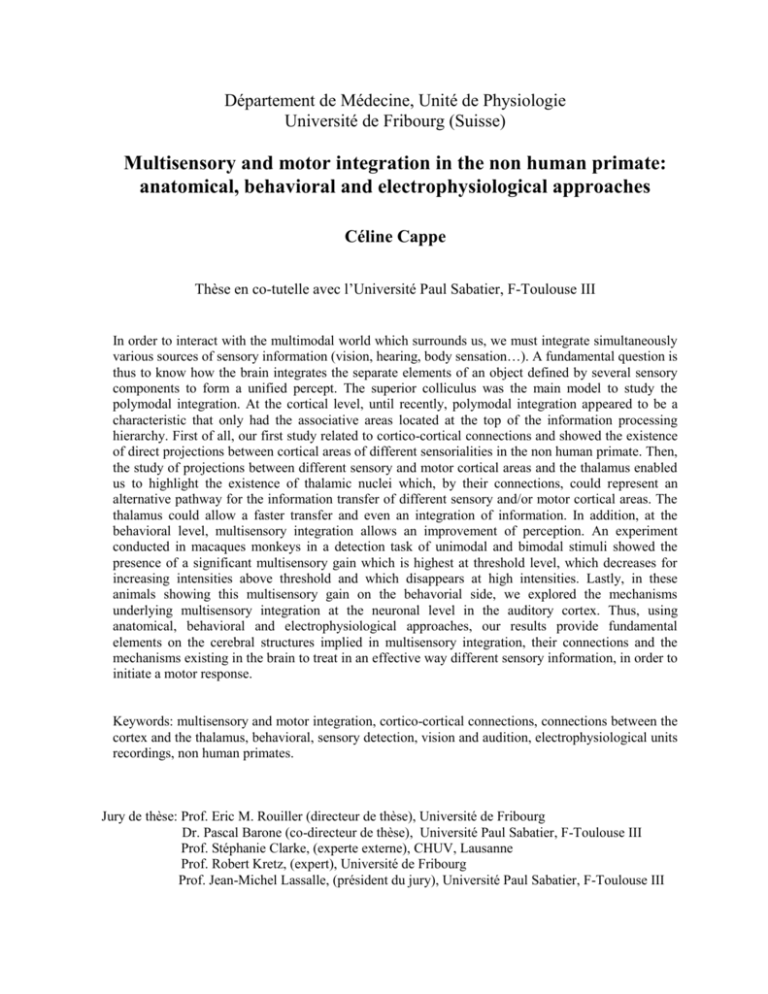
Département de Médecine, Unité de Physiologie Université de Fribourg (Suisse) Multisensory and motor integration in the non human primate: anatomical, behavioral and electrophysiological approaches Céline Cappe Thèse en co-tutelle avec l’Université Paul Sabatier, F-Toulouse III In order to interact with the multimodal world which surrounds us, we must integrate simultaneously various sources of sensory information (vision, hearing, body sensation…). A fundamental question is thus to know how the brain integrates the separate elements of an object defined by several sensory components to form a unified percept. The superior colliculus was the main model to study the polymodal integration. At the cortical level, until recently, polymodal integration appeared to be a characteristic that only had the associative areas located at the top of the information processing hierarchy. First of all, our first study related to cortico-cortical connections and showed the existence of direct projections between cortical areas of different sensorialities in the non human primate. Then, the study of projections between different sensory and motor cortical areas and the thalamus enabled us to highlight the existence of thalamic nuclei which, by their connections, could represent an alternative pathway for the information transfer of different sensory and/or motor cortical areas. The thalamus could allow a faster transfer and even an integration of information. In addition, at the behavioral level, multisensory integration allows an improvement of perception. An experiment conducted in macaques monkeys in a detection task of unimodal and bimodal stimuli showed the presence of a significant multisensory gain which is highest at threshold level, which decreases for increasing intensities above threshold and which disappears at high intensities. Lastly, in these animals showing this multisensory gain on the behavorial side, we explored the mechanisms underlying multisensory integration at the neuronal level in the auditory cortex. Thus, using anatomical, behavioral and electrophysiological approaches, our results provide fundamental elements on the cerebral structures implied in multisensory integration, their connections and the mechanisms existing in the brain to treat in an effective way different sensory information, in order to initiate a motor response. Keywords: multisensory and motor integration, cortico-cortical connections, connections between the cortex and the thalamus, behavioral, sensory detection, vision and audition, electrophysiological units recordings, non human primates. Jury de thèse: Prof. Eric M. Rouiller (directeur de thèse), Université de Fribourg Dr. Pascal Barone (co-directeur de thèse), Université Paul Sabatier, F-Toulouse III Prof. Stéphanie Clarke, (experte externe), CHUV, Lausanne Prof. Robert Kretz, (expert), Université de Fribourg Prof. Jean-Michel Lassalle, (président du jury), Université Paul Sabatier, F-Toulouse III
